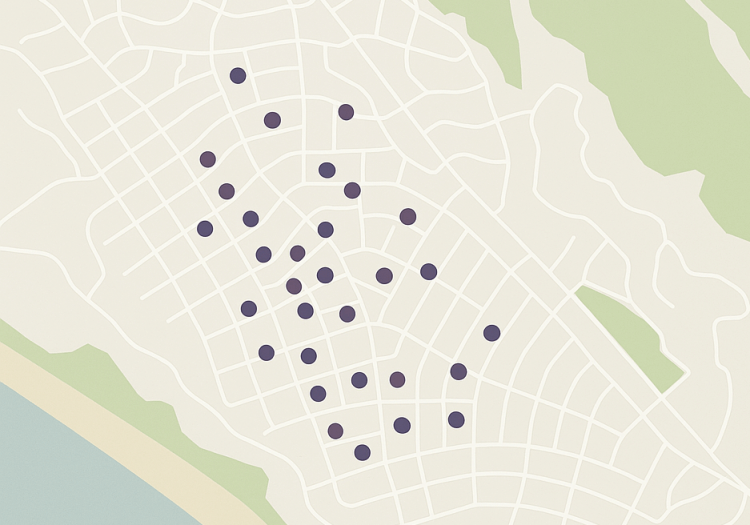Price reductions are becoming more common, with weekly drops steadily increasing. Still, well-priced lots in desirable locations are finding buyers
As Pacific Palisades continues its long road to recovery following January’s catastrophic wildfires, the local real estate market is feeling the weight of a growing inventory of burned lots and falling land values. While rebuilding efforts are gaining traction, the path forward for property owners remains uncertain.
According to a recent update from Anthony Marguleas, founder of Amalfi Estates, nearly 100 burned lots are hitting the market each month, with a total of 165 currently active, 20 in escrow, and 30 sold. This marks a significant increase from figures reported in early April, when 131 lots were active and only 16 had sold.
“The market is seeing a sharp uptick in supply, but demand has not kept pace,” Marguleas wrote in the email update. “Given the current pace, we could see more than 1,300 burned properties listed over the next year.”
Land values across much of the Palisades have dropped 35–40% since the fires. The Huntington area has shown relative resilience, with a more modest 10–15% decline. However, the broader trend suggests values may continue falling over the next 8–10 months as inventory grows.
Marguleas said many owners are reluctant to sell now, mistakenly believing the market has bottomed out.
“In reality, we’re only four miles into a 26-mile marathon,” he said. “For those who must sell, doing so sooner may help preserve equity. For those who can wait, holding may pay off over the next few years.”
Price reductions are becoming more common, with weekly drops steadily increasing. Still, well-priced lots in desirable locations are finding buyers — including a burned parcel listed at \$999,000 that ultimately sold for \$1.65 million after attracting multiple bids.
On the ground, signs of recovery are visible. As of May, the Palisades has issued 27 home-building permits — with the first granted just 57 days after the fire, a pace Marguleas says is twice as fast as post-Camp or Woolsey Fire rebuilds. Construction has already begun on several homes, and local leaders hope some will be completed by January 2026.
Plan check and permit fees have been suspended to accelerate recovery efforts.
Activity remains limited for existing homes and rental properties, particularly in fire-affected areas. From February to April, just 11 homes and 20 leases closed in the Palisades. Of those, only eight homes and five leases were located in burn zones.
“The lack of data makes it difficult to price or evaluate properties that weren’t directly damaged,” Marguleas noted.













